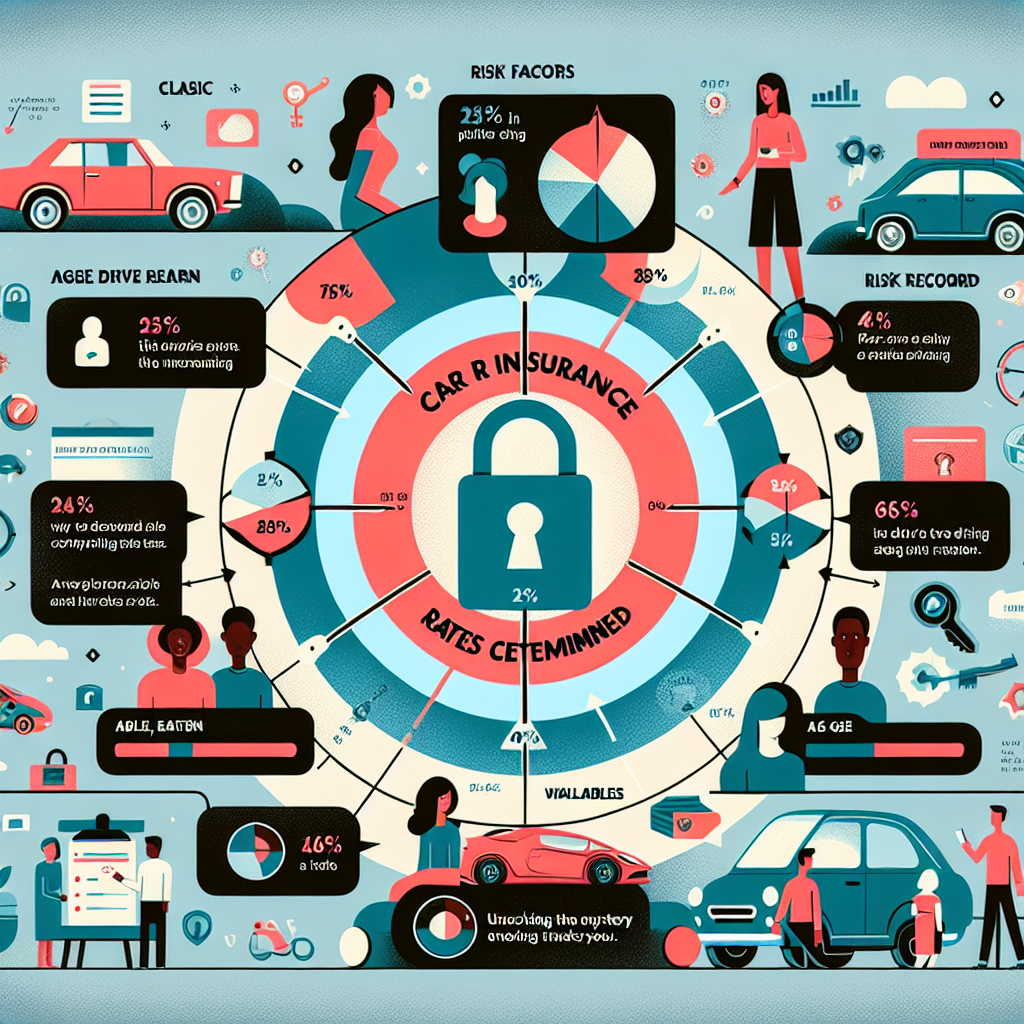===INTRO:===
When it comes to understanding how car insurance rates are determined, many drivers find themselves in a fog of confusion and frustration. The cost of coverage can feel arbitrary, often leading to anxiety over what seems like an unfair financial burden. In reality, there are intricate mechanisms behind the calculations of these rates that can significantly impact your premiums. By delving into the factors influencing car insurance pricing and the role of data and risk assessment, you can arm yourself with the knowledge needed to navigate this complex landscape and potentially lower your costs.
Understanding the Factors Influencing Car Insurance Pricing
Car insurance rates are primarily influenced by a combination of personal and external factors. At the core of rate determination are elements such as your driving history, where you live, and the type of vehicle you own. Insurance providers meticulously analyze these details to gauge the likelihood of a claim. For instance, a clean driving record often translates to lower premiums, while a history of accidents or traffic violations can lead to steeper rates. Additionally, geographical considerations play a role; urban areas with higher rates of accidents and theft typically incur higher insurance costs compared to rural locations.
Another crucial factor is the type and model of your vehicle. Insurers assess the likelihood of theft, repair costs, and safety ratings associated with different car models. Luxury cars, for example, often come with higher insurance premiums due to their expensive parts and higher risks of theft. Conversely, vehicles with strong safety ratings and lower theft rates can lead to discounts. Understanding these elements can empower you to make informed choices, whether you are selecting a car to purchase or considering ways to improve your driving record.
Lastly, demographic factors such as age, gender, and marital status can significantly affect your insurance rates. Statistically, younger drivers and males tend to have higher accident rates, which can result in higher premiums. On the flip side, married individuals often enjoy lower rates due to the perception of being more responsible drivers. Recognizing these influences on your premiums is essential for anyone seeking to understand the true costs associated with car insurance.
The Role of Data and Risk Assessment in Rate Determination
In an era driven by data, the car insurance industry has become increasingly analytics-focused. Insurers employ advanced algorithms and comprehensive databases to evaluate risk more accurately. Through the use of predictive modeling, companies can analyze historical claims data to forecast future outcomes, enabling them to set rates that reflect the specific risk profiles of individual customers. This data-centric approach not only streamlines the underwriting process but also enhances the insurer’s ability to offer more personalized premium rates.
Moreover, insurers are increasingly utilizing telematics technology to gather real-time driving data. Devices installed in vehicles record driving behaviors such as speed, braking patterns, and time of day. This information is invaluable in assessing risk on a granular level. For instance, a driver who exhibits safe driving habits can benefit from lower rates as their behavior demonstrates a lower likelihood of filing a claim. This shift towards a more personalized, behavior-based pricing model represents a significant evolution in how rates are determined.
Understanding the implications of this data-driven approach can lead to significant savings for consumers. By being aware of how your driving habits are monitored and evaluated, you can take proactive steps to cultivate safer driving practices. Programs that reward safe driving not only provide financial incentives but also encourage responsible behavior on the road, ultimately benefiting all drivers by contributing to safer streets.
===OUTRO:===
Unraveling the mystery behind how car insurance rates are determined can empower you to make smarter financial decisions. By understanding the multitude of factors that influence pricing and the sophisticated data analysis behind risk assessment, you can take control of your premiums. Don’t underestimate the power of your driving habits and vehicle choice; each decision can lead to significant savings. Seek out options that reward safe driving behaviors, and consider consulting with insurance agents to explore tailored policies that fit your unique lifestyle. Armed with this knowledge, you can confidently navigate the world of car insurance and work towards reducing your rates effectively.
Understanding Home Insurance Requirements Across CanadaUnderstanding Home Insurance: What Coverage Do You Need?Understanding Reasons for Car Insurance Claim DenialsRelevant LinkRelevant LinkRelevant LinkUnderstanding Canada’s Insurance Bank: A Comprehensive GuideUnderstanding Insurance Broker Salaries in Canada: A GuideUnderstanding Canada’s Insurance Coverage for Breast PumpsRelevant LinkRelevant LinkRelevant LinkUnderstanding Canada Travel Insurance for Pre-Existing ConditionsAffordable Visitor Health Insurance Options in Canada ExploredExploring Canada’s Leading Insurance Companies: A Comprehensive GuideRelevant LinkRelevant LinkRelevant Link
